


xxxxxThe German composer George Frederick Handel spent most of life in England. He first wrote Italian-style operas, such as Almira and Agrippina - the latter produced in Venice during a tour of Italy - and came to London in 17ll with his production of Rinaldo. Over the next 30 years, he wrote some 40 operas, including Floridante, Tamerlano and Scipione, and produced a number of oratorios, such as Israel in Egypt and Saul. In 1741 he moved away from operatic production, and in 1742 composed his inspired masterpiece, The Messiah. This was a huge success, and was followed by Samson, Joseph and his Brethren, Semele, Hercules and Solomon. He also composed over 80 overtures and 20 cantatas, as well as anthems, and orchestral and solo concertos. Favoured at court, he wrote music for Queen Anne, his Water Music for George I, and his Firework Music to celebrate the Treaty of Aix-la-Chapelle in 1749. His genius as a composer can be seen in the sheer power, drama and lyrical beauty of his music. His work influenced, among others, Mozart, Rossini, Haydn and Mendelssohn.
GEORGE FREDERICK HANDEL 1685 - 1759 (J2, W3, AN, G1, G2)
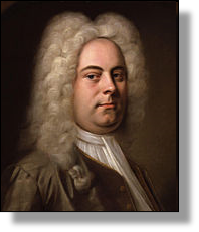 xxxxxThe German composer George Frederick Handel was born in Halle. Showing an extraordinary musical talent from an early age, he received instruction from the local organist and then, at the age of 18 (his musical tuition at an end!), he became a violinist at the Opera House in Hamburg. In 1705 he achieved success with his first opera, Almira, and then the following year began a visit to Italy, spending time in Florence, Rome and Venice. Throughout his visit he composed operas and oratorios, and, having gained mastery of the Italian style (known for its flowing melody), achieved spectacular success with his opera Agrippina, staged at Venice in 1709, towards the end of his tour.
xxxxxThe German composer George Frederick Handel was born in Halle. Showing an extraordinary musical talent from an early age, he received instruction from the local organist and then, at the age of 18 (his musical tuition at an end!), he became a violinist at the Opera House in Hamburg. In 1705 he achieved success with his first opera, Almira, and then the following year began a visit to Italy, spending time in Florence, Rome and Venice. Throughout his visit he composed operas and oratorios, and, having gained mastery of the Italian style (known for its flowing melody), achieved spectacular success with his opera Agrippina, staged at Venice in 1709, towards the end of his tour.
xxxxxOn his return, he became musical director to the elector of Hanover (the future George I of Great Britain), and then in 1711 he took his opera, Rinaldo, to London. Such was the immense success it achieved that the following year he settled in England and quickly gained the favour of Queen Anne by his Ode for the Queen's Birthday and his Utrecht Te Deum and Jubilate, written to celebrate the Treaty of Utrecht in 1714. His Water Music, written for George I, his former employer, likewise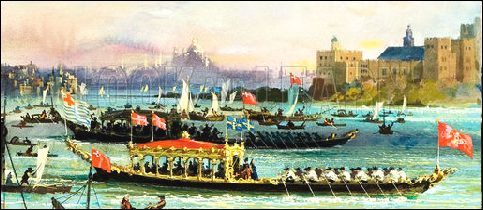 won him royal approval. This was played for the first time in 1717 during a pageant on the River Thames (illustrated). The royal party took part in a procession of decorated barges from Whitehall to Limehouse, the music being provided by a barge-full of musicians!
won him royal approval. This was played for the first time in 1717 during a pageant on the River Thames (illustrated). The royal party took part in a procession of decorated barges from Whitehall to Limehouse, the music being provided by a barge-full of musicians!
xxxxxFrom 1720 he began staging his operas at the King's Theatre, and over the next 20 years produced 40 such works in the Italian style, the majority centred around an heroic figure from history. These proved highly popular, and included Floridante in 1721, Giulio Cesare and Tamerlano in 1724, Rodelinda in 1725, and Scipione the following year. And not withstanding a marked decline in the popularity for this type of opera - due in no small part to the ridicule poured on it by the English dramatist John Gay in his The Beggar's Opera of 1728 - Handel continued his stage productions throughout the 1730s. And it was during this decade, in 1737, that despite suffering a slight stroke, he wrote his Funeral Anthem for Queen Caroline.
xxxxxIn 1741, however, he eventually turned away from opera and, facing financial ruin, concentrated his efforts on composing another series of English oratorio - three-act dramatic works performed in concert. He had already produced a number of these large-scale compositions for voices, including Esther in 1718, Deborah and Athalia in 1733, and, in 1739, two outstanding works, Israel in Egypt and Saul, the latter containing the so-called Dead March. To these he added, in 1742, his greatest choral drama The Messiah. Composed in less than three weeks, this inspired work - alive with a sense of jubilation - was first performed in the Music Hall in Dublin, and then given its London premiere at 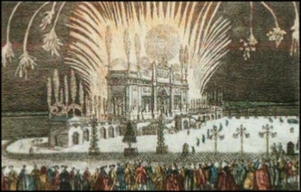 Covent Garden Theatre the following year. It was a huge success, and was followed over the next ten years by a string of masterpieces, such as Samson in 1743, Joseph and His Brethren in 1744, his two secular works Semele and Hercules, and Solomon in 1749. And it was in 1749 that he produced his ever popular Music for the Royal Fireworks (illustrated), performed in Green Park to celebrate the Treaty of Aix-la-Chapelle, and accompanied by the firing of 101 cannons! As one member of the audience put it, "Never have such terrible rumblings fallen on my head".
Covent Garden Theatre the following year. It was a huge success, and was followed over the next ten years by a string of masterpieces, such as Samson in 1743, Joseph and His Brethren in 1744, his two secular works Semele and Hercules, and Solomon in 1749. And it was in 1749 that he produced his ever popular Music for the Royal Fireworks (illustrated), performed in Green Park to celebrate the Treaty of Aix-la-Chapelle, and accompanied by the firing of 101 cannons! As one member of the audience put it, "Never have such terrible rumblings fallen on my head".
xxxxxIn addition to opera and oratorio, Handel also produced a wide range of musical forms, including some 80 overtures, 22 cantatas, sonatas, orchestral and solo concertos, together with twelve anthems for his patron, the Duke of Chandos, and four anthems to mark the coronation of George II in 1727, one of which is the well-known Zadok the Priest. In 1720 he produced a set of variations for harpsichord that later came to be popularly known as The Harmonious Blacksmith. Such a variety of music, noted above all for its grandeur and wealth of melody, appealed to a much wider audience than reached hitherto, and became an enduring part of British culture.
xxxxxIn 1751 his eyesight began to fail, and he only just managed to complete his last oratorio, Jehtha, performed the following year. He died in April 1759, just a week after hearing a performance of his Messiah, the work which marks him out as an outstanding master of choral music, and which, above all, has served to identify him as one of the most successful and internationally recognised musicians of all time. Together with his contemporary Johann Sebastian Bach, he is considered one of the greatest baroque masters in both instrumental and vocal music. Beethoven later wrote that “he achieved great effects with simple means.” German by birth, but becoming a British subject as early as 1726, he was buried in Westminster Abbey.
xxxxxIn his early work Handel was clearly influenced by the Italian composers Arcangelo Corelli and Alessandro Scarlatti, and he later owed something to the French style of Jean Baptiste Lully - notably in his overtures - and the English composer Henry Purcell, but he was himself exceedingly rich in talent. His genius as a composer can best be seen in the sheer power, dramatic content and lyrical beauty of his music in all its forms. It is not surprising, therefore, that his legacy proved wide reaching. As we shall see, his operatic compositions were to inspire such composers as the Austrian Amadeus Mozart and the Italian Gioacchino Rossini, but it is doubtless in his oratorios, over 20 in number, that he made his greatest impact. Notable for their prominent use of the chorus, they were to influence, among others, the Austrian composer Joseph Haydn, and his fellow countryman Felix Mendelssohn.
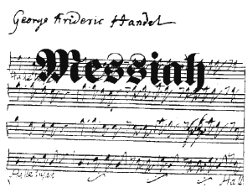
xxxxxIncidentally, The Messiah, the world's most widely performed oratorio, was not played in his native land until 1772. It was written, we are told, when Handel was facing financial ruin, and was in despair. Nevertheless, he was greatly moved when composing the Hallelujah Chorus, part of this work. He later told a friend, "I did think I did see all Heaven before me, and the great God himself". King George II was also moved by this particular chorus. He stood up at its beginning - followed by the entire audience - and remained standing throughout the piece, an act of homage which has been observed at all subsequent performances. (The word Hallelujah derives from two Hebrew words and means "Praise to Ye Jehovah".) Today, the work stands out as one of the greatest expressions of the Christian faith. ……
xxxxx…… The proceeds from these early performances were given to local charities, including the foundling hospital - the first of its kind - established in London by Thomas Coram in 1741. ……
xxxxx…… It is said that the first performance of the Messiah was expected to be so well attended that ladies were asked to come without hoop-framed skirts, and gentlemen without their swords, so that more people could crowd into the hall!
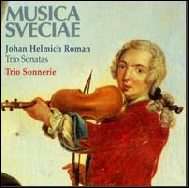 xxxxxA young man who met Handel and played in his orchestra when he was studying in London from 1715 to 1721, was the Swedish composer Johan Helmich Roman (1694-1758). The German maestro’s music made a lasting impression upon him, and his subsequent work earned him the title “The Swedish Handel”. He served as chief master of the Swedish Royal Orchestra for a number of years, and in 1731 produced the first public concerts in Sweden. He wrote a substantial amount of music, including cantatas and sonatas, but he is principally remembered today for his Music for a Royal Wedding, a large orchestral suite in the style of Handel, composed in 1744.
xxxxxA young man who met Handel and played in his orchestra when he was studying in London from 1715 to 1721, was the Swedish composer Johan Helmich Roman (1694-1758). The German maestro’s music made a lasting impression upon him, and his subsequent work earned him the title “The Swedish Handel”. He served as chief master of the Swedish Royal Orchestra for a number of years, and in 1731 produced the first public concerts in Sweden. He wrote a substantial amount of music, including cantatas and sonatas, but he is principally remembered today for his Music for a Royal Wedding, a large orchestral suite in the style of Handel, composed in 1744.
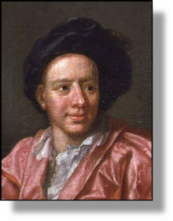 xxxxxFor a time Handel was also on friendly terms with the English organist and composer Maurice Greene (1696-1755). They used to play the organ together when Greene was organist at St. Paul’s Cathedral, and then afterwards have a meal at the nearby Queen’s Arms. The friendship came to an abrupt end, however, when Greene rather than Handel was appointed organist and composer to the Chapel Royal in 1727. Later Greene was elected Master of the King’s Musick, a post he held alongside his professorship of music at Cambridge University. He wrote six orchestral overtures and pieces for keyboard, and his vocal works included 80 anthems. His best known work is the anthem Palm 39: Lord Let Me Know Mine End (part of the Church of England burial service). In 1726 he played a part in the founding of the Academy of Ancient Music, and in retirement began a collection of English sacred music. He was one time teacher of the English composer William Boyce, and it was he who continued and completed the collection.
xxxxxFor a time Handel was also on friendly terms with the English organist and composer Maurice Greene (1696-1755). They used to play the organ together when Greene was organist at St. Paul’s Cathedral, and then afterwards have a meal at the nearby Queen’s Arms. The friendship came to an abrupt end, however, when Greene rather than Handel was appointed organist and composer to the Chapel Royal in 1727. Later Greene was elected Master of the King’s Musick, a post he held alongside his professorship of music at Cambridge University. He wrote six orchestral overtures and pieces for keyboard, and his vocal works included 80 anthems. His best known work is the anthem Palm 39: Lord Let Me Know Mine End (part of the Church of England burial service). In 1726 he played a part in the founding of the Academy of Ancient Music, and in retirement began a collection of English sacred music. He was one time teacher of the English composer William Boyce, and it was he who continued and completed the collection.
Including:
Johan Helmich Roman,
Maurice Greene, Thomas
Arne and Domenico Scarlatti

xxxxxThe contemporary English composer Thomas Arne (1710-1778) was rather overshadowed by the popularity of Handel's work. He also wrote Italian opera for the London stage, but he is best known today for his masque Alfred, produced in 1740 and containing the patriotic song Rule, Britannia. His finest works are his masque Comus, his opera Artaxerxes, his oratorio Judith, and songs he produced for a series of Shakespearean comedies. He also composed chamber music, overtures and concertos.
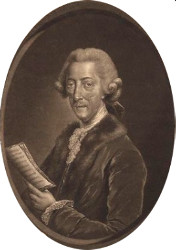 xxxxxAnother Englishman at this time who composed dramatic music and introduced Italian opera to the London stage was Thomas Arne (1710-1778). A fine musician, he would certainly have gained greater recognition had not his early work been overshadowed by Handel's impressive and phenomenal output. As it was, he became a prominent composer, and his style influenced English music into the nineteenth century.
xxxxxAnother Englishman at this time who composed dramatic music and introduced Italian opera to the London stage was Thomas Arne (1710-1778). A fine musician, he would certainly have gained greater recognition had not his early work been overshadowed by Handel's impressive and phenomenal output. As it was, he became a prominent composer, and his style influenced English music into the nineteenth century.
xxxxxAmong his best works are the opera Artaxerxes of 1762, and the masque Alfred, performed before the Prince of Wales in 1740 and containing the popular patriotic 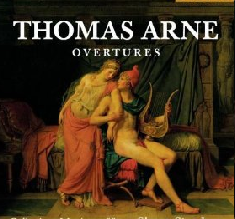 song Rule, Britannia (to words by the Scottish poet James Thomson). He also produced a number of songs for a series of Shakespearean comedies, and these included Blow, blow thou winter wind, from As You Like It, and Where the bee sucks, from The Tempest. Later, in the 1770s, he composed music for the masque The Fairy Prince, and for two works by the English poet William Mason (1724-1797), the historical tragedies Elfrida and Caractacus. In addition to a number of song collections and his oratorio Judith of 1761, he also composed chamber music, sonatas, overtures and concertos.
song Rule, Britannia (to words by the Scottish poet James Thomson). He also produced a number of songs for a series of Shakespearean comedies, and these included Blow, blow thou winter wind, from As You Like It, and Where the bee sucks, from The Tempest. Later, in the 1770s, he composed music for the masque The Fairy Prince, and for two works by the English poet William Mason (1724-1797), the historical tragedies Elfrida and Caractacus. In addition to a number of song collections and his oratorio Judith of 1761, he also composed chamber music, sonatas, overtures and concertos.
xxxxxArne, the son of an upholsterer in Covent Garden, London, was educated at Eton and destined for a career in law, but he showed such musical talent - notably in the playing of the violin and keyboard instruments - that he was soon writing for the theatre. His first Italian-style opera, Rosamond, produced in 1733 and with a libretto by the English writer Joseph Addison, proved successful, but it was his masque Comus, performed in 1738, and acclaimed for the light, airy style of its melodies, that established his reputation as a lyric composer. He was awarded a doctorate in music by Oxford University in 1759.
xxxxxThe Italian harpsichordist and composer Domenico Scarlatti (1685-1757), whose father, Alessandro, had made popular the comic Neapolitan style of opera, met Handel when he was in Venice. He spent much of his life in Spain, and it was here that he produced the 500 or so short, single-movement sonatas which made him famous. Many of these brilliant "sound pieces" were written for the harpsichord, and greatly extended the musical potential of this instrument. In them he captured every aspect, mood and flavour of Spanish life. He also composed operas, instrumental works, and a quantity of sacred music.
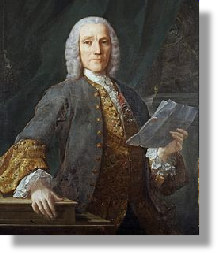 xxxxxAnother outstanding musician of this period - and one who had become friendly with Handel when they were both in Venice - was the Italian harpsichordist and composer Domenico Scarlatti (1685-1757) (illustrated). As a youngster he was trained by his father, Alessandro Scarlatti. He had been an influential composer of vocal music who, at the turn of the century, had played an important part in making popular the comic Neapolitan style of opera - and its distinctive overture - throughout the western world.
xxxxxAnother outstanding musician of this period - and one who had become friendly with Handel when they were both in Venice - was the Italian harpsichordist and composer Domenico Scarlatti (1685-1757) (illustrated). As a youngster he was trained by his father, Alessandro Scarlatti. He had been an influential composer of vocal music who, at the turn of the century, had played an important part in making popular the comic Neapolitan style of opera - and its distinctive overture - throughout the western world.
xxxxxDomenico likewise gained international fame, frequently touring Europe as a travelling virtuoso. During his early years, he was composer for both the exiled Queen Maria Casimira of Poland, and for King John V of Portugal, and served as musical director at St. Paul’s, Rome. In 1729 he went to Spain, first to Seville and then to the Spanish court at Madrid. He remained there for the rest of his life, living in royal residences or in one of the nearby palaces, including the Escorial. 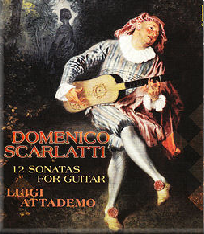
xxxxxScarlatti composed a number of operas, some instrumental works, and a quantity of sacred music, but, as a master of keyboard technique, he is best remembered for the brilliance and originality of his short, single-movement sonatas. Over 500 of these "sound pieces" remain - mostly for the solo harpsichord - and they clearly show how he extended the musical possibilities of this instrument. Indeed, it has been said that he expanded the role of the harpsichord in much the same way as Frédéric Chopin and Franz Liszt were later to do for the piano.
xxxxxHe began writing these sonatas in 1738 during his long stay at the Spanish court, but the bulk of them - some 350 - were produced between 1753 and 1757. As one might expect, they have an unmistakable Spanish flavour, brilliantly capturing every aspect of Spanish life, including the pomp and circumstance of court life. And in these keyboard works he expresses the whole gambit of emotions - from tragedy and melancholy to meditation and gay abandon. But they had little direct influence on his immediate successors, and it was not until they were published in chronological order towards the end of the 20th century that they earned the interest they deserved.
xxxxxIncidentally, while in Rome in 1708 Scarlatti took part in a harpsichord and organ competition with George Frederick Handel. The harpsichord contest was left undecided, but - perhaps not surprisingly - the German composer won the organ event. ……
xxxxx…… Anotherxcelebrated instrumentalist at this time was the Italian violinist and composer 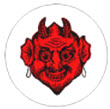 Giuseppe Tartini (1692-1770). He opened a violin school in Padua in 1728, and this became famous throughout Europe. One of the outstanding masters of the violin, he greatly improved the style of bowing, and he wrote a number of treatises on musical ornamentation and harmony. He composed some 300 works, and is best remembered
Giuseppe Tartini (1692-1770). He opened a violin school in Padua in 1728, and this became famous throughout Europe. One of the outstanding masters of the violin, he greatly improved the style of bowing, and he wrote a number of treatises on musical ornamentation and harmony. He composed some 300 works, and is best remembered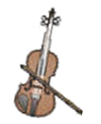 today for his "Devil's Trill" sonata, a work which called for outstanding technical skill. Produced around 1749, he claimed that the Devil himself had played the sonata to him in a dream. It is said that the brilliant Genoan violin virtuoso Nicolò Paganini, (born some twelve years after Tartini’s death) always raised his hat whenever Tartini’s name was mentioned!
today for his "Devil's Trill" sonata, a work which called for outstanding technical skill. Produced around 1749, he claimed that the Devil himself had played the sonata to him in a dream. It is said that the brilliant Genoan violin virtuoso Nicolò Paganini, (born some twelve years after Tartini’s death) always raised his hat whenever Tartini’s name was mentioned!
Acknowledgements
Handel: attributed to the German portrait painter Balthasar Denner (1685-1749), c1727 – National Portrait Gallery, London. Water Music: date and artist unknown – private collection. Firework Music: 18th century engraving, artist unknown – Gerald Coke Handel Collection, Foundling Museum, London. Greene: detail, by the English painter Francis Hayman (1708-1776), 1747 – National Portrait Gallery, London. Arne: by the English engraver Robert Dunkarton (1744-1811), after the English engraver William Humphrey (c1740-c1810), 1778 – National Portrait Gallery, London. Scarlatti: by the 18th century Italian artist Domingo Antonio Velasco, c1739 – Patudos House, Museum of Alpiarca, Portugal.
G2-1727-1760-G2-1727-1760-G2-1727-1760-G2-1727-1760-G2-1727-1760-G2-1727-1760-G2






 xxxxxThe German composer George Frederick Handel was born in Halle. Showing an extraordinary musical talent from an early age, he received instruction from the local organist and then, at the age of 18 (his musical tuition at an end!), he became a violinist at the Opera House in Hamburg. In 1705 he achieved success with his first opera, Almira, and then the following year began a visit to Italy, spending time in Florence, Rome and Venice. Throughout his visit he composed operas and oratorios, and, having gained mastery of the Italian style (known for its flowing melody), achieved spectacular success with his opera Agrippina, staged at Venice in 1709, towards the end of his tour.
xxxxxThe German composer George Frederick Handel was born in Halle. Showing an extraordinary musical talent from an early age, he received instruction from the local organist and then, at the age of 18 (his musical tuition at an end!), he became a violinist at the Opera House in Hamburg. In 1705 he achieved success with his first opera, Almira, and then the following year began a visit to Italy, spending time in Florence, Rome and Venice. Throughout his visit he composed operas and oratorios, and, having gained mastery of the Italian style (known for its flowing melody), achieved spectacular success with his opera Agrippina, staged at Venice in 1709, towards the end of his tour.  won him royal approval. This was played for the first time in 1717 during a pageant on the River Thames (illustrated). The royal party took part in a procession of decorated barges from Whitehall to Limehouse, the music being provided by a barge-
won him royal approval. This was played for the first time in 1717 during a pageant on the River Thames (illustrated). The royal party took part in a procession of decorated barges from Whitehall to Limehouse, the music being provided by a barge- Covent Garden Theatre the following year. It was a huge success, and was followed over the next ten years by a string of masterpieces, such as Samson in 1743, Joseph and His Brethren in 1744, his two secular works Semele and Hercules, and Solomon in 1749. And it was in 1749 that he produced his ever popular Music for the Royal Fireworks (
Covent Garden Theatre the following year. It was a huge success, and was followed over the next ten years by a string of masterpieces, such as Samson in 1743, Joseph and His Brethren in 1744, his two secular works Semele and Hercules, and Solomon in 1749. And it was in 1749 that he produced his ever popular Music for the Royal Fireworks (
 xxxxxA young man who met Handel and played in his orchestra when he was studying in London from 1715 to 1721, was the Swedish composer Johan Helmich Roman (1694-
xxxxxA young man who met Handel and played in his orchestra when he was studying in London from 1715 to 1721, was the Swedish composer Johan Helmich Roman (1694- xxxxxFor a time Handel was also on friendly terms with the English organist and composer Maurice Greene (1696-
xxxxxFor a time Handel was also on friendly terms with the English organist and composer Maurice Greene (1696-
 xxxxxAnother Englishman at this time who composed dramatic music and introduced Italian opera to the London stage was Thomas Arne (1710-
xxxxxAnother Englishman at this time who composed dramatic music and introduced Italian opera to the London stage was Thomas Arne (1710- song Rule, Britannia (to words by the Scottish poet James Thomson). He also produced a number of songs for a series of Shakespearean comedies, and these included Blow, blow thou winter wind, from As You Like It, and Where the bee sucks, from The Tempest. Later, in the 1770s, he composed music for the masque The Fairy Prince, and for two works by the English poet William Mason (1724-
song Rule, Britannia (to words by the Scottish poet James Thomson). He also produced a number of songs for a series of Shakespearean comedies, and these included Blow, blow thou winter wind, from As You Like It, and Where the bee sucks, from The Tempest. Later, in the 1770s, he composed music for the masque The Fairy Prince, and for two works by the English poet William Mason (1724- xxxxxAnother outstanding musician of this period -
xxxxxAnother outstanding musician of this period -
 Giuseppe Tartini (1692-
Giuseppe Tartini (1692- today for his "Devil's Trill" sonata, a work which called for outstanding technical skill. Produced around 1749, he claimed that the Devil himself had played the sonata to him in a dream. It is said that the brilliant Genoan violin virtuoso Nicolò Paganini, (born some twelve years after Tartini’s death) always raised his hat whenever Tartini’s name was mentioned!
today for his "Devil's Trill" sonata, a work which called for outstanding technical skill. Produced around 1749, he claimed that the Devil himself had played the sonata to him in a dream. It is said that the brilliant Genoan violin virtuoso Nicolò Paganini, (born some twelve years after Tartini’s death) always raised his hat whenever Tartini’s name was mentioned!

